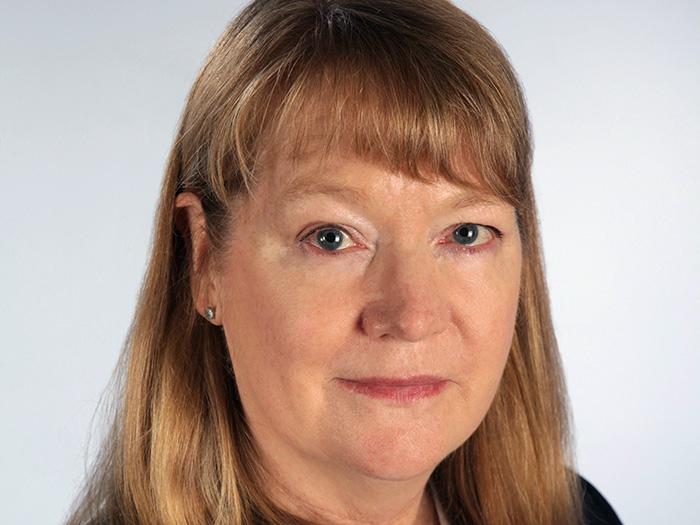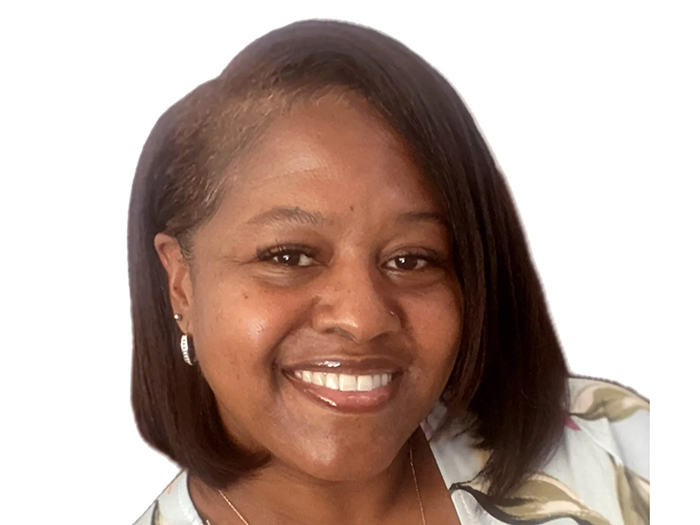Learn How Workers’ Comp Broker Susan Webb Leaps Over Legal and Regulatory Hurdles

As a high school foreign exchange student, Susan Webb spent a year in Peru. Before she acquired fluency in Spanish, she was obliged to listen and observe — skills that carried over to her insurance career.
Webb didn’t plan an insurance career.
After earning her undergraduate degree in cultural anthropology from the University of Washington — in part to return to Peru — she wanted a grown-up life with an apartment and a car like all her friends, so she followed a friend to Aetna.
There she met Lisa Kelly, who plucked her from an admin job and introduced her to claims management. Webb followed Kelly to Aetna, then a small boutique TPA, then to Johnson Higgins, which Marsh acquired in 1997.
“I enjoyed the client interaction,” Webb said, and she had found her career. She eventually followed Kelly to Marsh. “We were a great team. Lisa was big-picture and boisterous, and I was more analytical, a worker bee.
“Here I am now,” she said of her role as senior claim advocate at Marsh, “observing, listening and absorbing.”
Her job also includes untangling state-specific workers’ compensation laws and rules to clear the path for injured employees to get the best possible medical treatment.
Shape-Shifting State Regs
The effort it takes to keep track of the state-by-state regulatory landscape ensures the job is never dull.
“Every jurisdiction is different,” Webb said. “Clients have questions about what injuries are and are not work related. They ask, ‘Should I file a claim?’ The answer is dictated by that state’s rules.”
States have a lot of presumptive rules, she said.
Washington State, for example, where Webb lives and practices, passed emergency regulations that made COVID-related claims “presumed compensable” for certain types of employees, such as workers in long-term care facilities.
The workers’ compensation world didn’t have to grapple with the same COVID-related compensability questions that confused the property insurance world, but determining compensability has been complicated nevertheless, because every state has its own rules, which continue to shift during COVID.
Claims advocacy teams stay up-to-date on communications, Webb said, pushing out information related to changing state regulations to keep clients informed and compliant.
When designing a program for a client, sometimes Webb must discern what it needs rather than what it wants: “You ask, ‘What do you want to accomplish?’ ”
Keeping careful track of the goal, she sets about designing an insurance program.
For example, a client seeking a third-party administrator (TPA) first defined its goals, then narrowed the field of candidates to two whose resources and services met its specifications. The client had a warm relationship with the salesperson of one, but Webb encouraged the client to take a closer look. She walked the client through its original goals, reviewed both candidates’ resources, and compared both with the original defined goal.
“They were reluctant to pass on that salesperson. I guided them through a process where they made a decision based on logic rather than emotion.”
A client that is unhappy with its TPA may request a best practices audit, Webb said, which can be expensive and time consuming. Absent a good cause for the audit, she’ll ask the client to probe deeper.
If the client is unhappy because of an event or individual within the TPA, the resolution can be as simple as a staffing change.
“I get everyone on the phone and talk it through. I’m like a marriage counselor.” If that fails, “we may get ready for an audit,” she said.
A desire to improve other people’s lives, without drawing undue attention to herself, remains a constant. “I want to make my clients look good. I put information in front of them that they can take to their management.”
She recalls a case where she and the client reached out to a woman on fentanyl and oxycontin, who was motivated to improve her life despite the risks and discomforts of getting clean. Her doctors thought it was dangerous to wean her from her meds, so Webb brought in a case management medical firm to guide her through a medically managed detox, then participated in monthly check-in calls.
“She was able to get off a lot of meds. She had been on path of use for rest of her life, and now she’s more active, more social,” Webb said.
COVID-19 Changed Everything
The workplace is forever changed by COVID-19, Webb said, for herself and for the insurance industry.
For herself, she doesn’t envision going back to the office full time, although she misses the chance conversations in hallways that can spark ideas and collaborations. Although purchased at a tragic price, the COVID workplace experiment could help alleviate the talent pinch by attracting more people to the role of claims examiner.
Pre-COVID, Webb said, “not a lot of young people wanted to be claims examiners. [But] the option of working from home, living away from the city, could open up the talent pool.”
Formerly among the most traditional of workers, the emerging ranks of claims examiners could include people coming out of retirement and part-time workers enticed by newly flexible workplace arrangements.
The boom in telemedicine for workers’ compensation claims will also continue, Webb predicted.
Before COVID forced an alternative to in-person visits for workers’ comp claims, telemedicine had been slow in adoption.
“I think that’s great,” Webb said. “It’s a great tool to service employees in remote locations,” where many fishing, agricultural and manufacturing clients are located.
More Tech in Industry’s Future
Webb expects the insurance industry of the future to derive greater benefit from technology.
“Data analysis, artificial intelligence, predictive modeling — everyone in the industry has it.”
But not everyone is milking it for all its worth.
For example, if a note predicting a 75% chance of litigation pops up during a claim review, “that’s great information, but I don’t see a great response to that information. What value does it have if we don’t do anything about it?”
Webb has “mixed emotions” about autoadjudication, where a computer model processes simple pass-and-pay claims — the 80% in the 80/20 rule — that don’t require hands-on attention from a claims examiner.
“Autoadjutication is appropriate as long as the technology tool can sway claims that need more attention. That’s what the industry should be working on.”
This in turn, she said, will help with the industry’s staffing problem: “It will reduce the time spent on medical-only cases so cases requiring intervention get the attention they need.”
She also sees an expansion of the advocacy model, her own role at Marsh, into mental health issues. In the past, she said, the industry avoided the mental health parts of claims unless the doctor specifically flagged them.
Now, if the worker is having a mental health issue that affects recovery on the claim, the insurer must address it, either by paying for the treatment, facilitating a referral to the employee assistance program or even guiding the worker to community services.
“You can’t look at only one body part when the whole body affects outcomes,” Webb said.
“The industry is changing,” she continued. “It’s a process. I see more concern and care for workers than ever.” &










